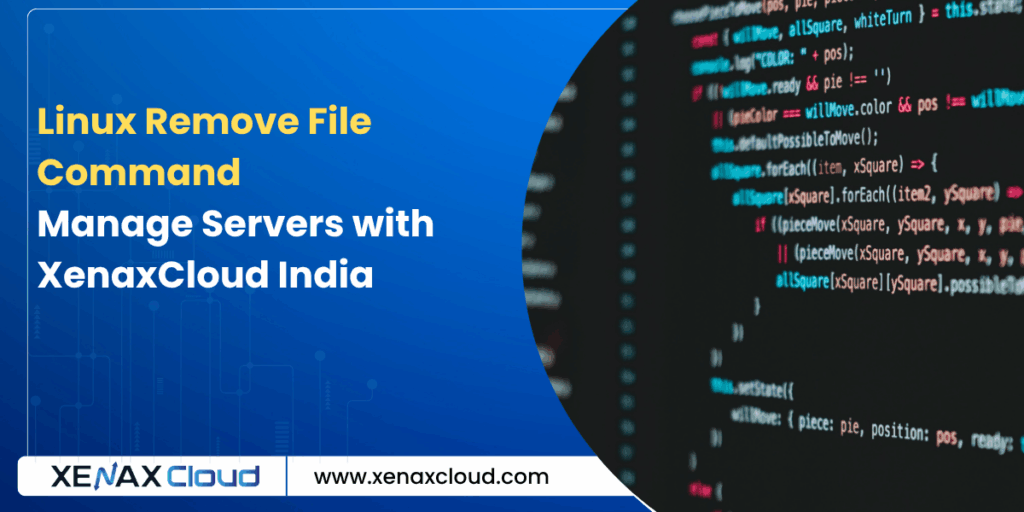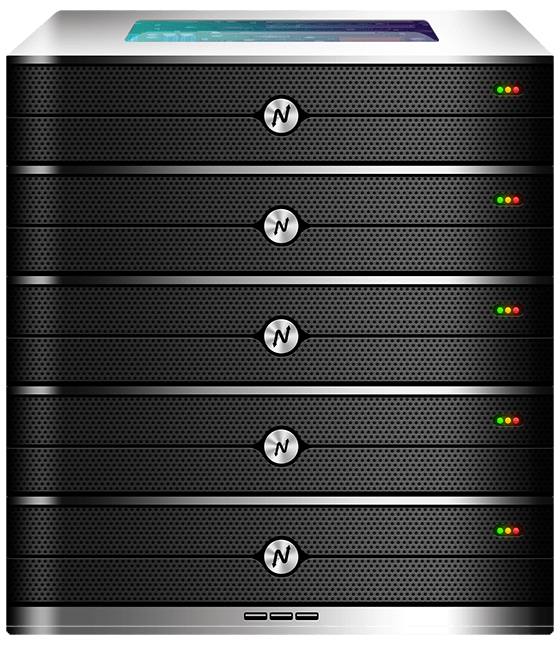The linux remove file command is essential for efficient server management, enabling developers to maintain clean and secure systems. Whether you’re using remove command linux or need to delete linux file, mastering these commands is critical for optimizing server performance. XenaxCloud, with its India-based data center, provides robust hosting solutions through its VPS Server, Shared Hosting, Indian RDP, Dedicated Servers, Domains, and Reseller Hosting. This comprehensive guide explains how to use linux remove file command, remove command linux, and delete linux file on XenaxCloud’s VPS Server, making it ideal for web hosting India with a 99.5% uptime guarantee.
Understanding Linux Remove File Command
The linux remove file command primarily refers to the rm command in Linux, used to delete files and directories. Related commands include:
rm: Deletes individual files.rm -r: Recursively removes directories and their contents.rm -f: Forces deletion without prompting.unlink: Removes a single file without affecting directories.
These commands are vital for managing files on XenaxCloud’s VPS Server.
Why Use Linux Remove File Command?
- Free Disk Space: Remove unnecessary files to optimize storage.
- Enhance Security: Delete sensitive data to prevent unauthorized access.
- Server Maintenance: Clear logs or temporary files for smooth operations.
- Automation: Script deletions to streamline workflows.
XenaxCloud’s VPS Server provides full root access for remove command linux.
Why Choose XenaxCloud for Linux Server Management?
XenaxCloud’s VPS Server is tailored for linux remove file command tasks:
- Full Root Access: Execute remove command linux with complete control.
- India-Based Data Center: Low latency for Indian developers.
- High Performance: Optimized for Linux environments.
- Free SSL: Secures your server and data.
- 99.5% Uptime: Ensures reliable access for file management.
- 24/7 Support: Expert assistance in Hindi, English, and other Indian languages.
How to Use Linux Remove File Command with XenaxCloud
Follow these steps to implement linux remove file command and delete linux file on XenaxCloud’s VPS Server or Shared Hosting.
Step 1: Choose a Hosting Plan
XenaxCloud’s VPS Server offers robust resources for Linux management, with options for different levels of RAM, storage, and CPU. For simpler tasks, Shared Hosting provides a cPanel interface for basic file management. Both support web hosting India with full compatibility for Linux commands.
Step 2: Register a Domain
- Select a Domain: Choose a .in domain via Domains to enhance local SEO for Indian audiences.
- Configure DNS: Point your domain to XenaxCloud’s name servers or your VPS IP address.
- Verify Resolution: Ensure your domain resolves to your VPS Server or Shared Hosting account.
Step 3: Access Your VPS
- Choose an OS: Select Ubuntu or CentOS for your VPS Server.
- Connect to VPS:
- Use Indian RDP for GUI-based management.
- Connect via SSH for terminal access:
ssh user@your-vps-ip
- Update System:
sudo apt update && sudo apt upgrade -y # For Ubuntu sudo yum update -y # For CentOS
Step 4: Use Linux Remove File Command
- Basic File Deletion:
- Delete a single file using linux remove file command:
rm filename.txt - Enable confirmation to avoid accidental deletion:
rm -i filename.txt
- Delete a single file using linux remove file command:
- Delete Multiple Files:
- Remove multiple files at once:
rm file1.txt file2.txt
- Remove multiple files at once:
- Delete a Directory:
- Use remove command linux to delete a directory and its contents:
rm -r directory_name - Force deletion without prompts:
rm -rf directory_name
- Use remove command linux to delete a directory and its contents:
- Use Wildcards:
- Delete all files with a specific extension (e.g.,
.log):rm *.log
- Delete all files with a specific extension (e.g.,
- Safe Deletion Practices:
- Move files to a temporary trash directory before permanent deletion:
mkdir ~/trash mv filename.txt ~/trash rm ~/trash/filename.txt
- Move files to a temporary trash directory before permanent deletion:
- Secure Deletion:
- Use
shredto overwrite and delete linux file securely:shred -u sensitive_file.txt
- Use
- Automate Deletions:
- Set up a cron job to periodically delete linux file (e.g., old logs):
crontab -e # Add: 0 0 * * * rm -f /var/log/*.log
- Set up a cron job to periodically delete linux file (e.g., old logs):
Step 5: Manage Files on Shared Hosting
- Access cPanel:
- Log in to cPanel via Shared Hosting.
- Use File Manager:
- Navigate to File Manager > public_html.
- Select files and click Delete to delete linux file via a GUI interface.
- Use cPanel Terminal (if available):
- Run linux remove file command in cPanel’s Terminal:
rm public_html/filename.txt
- Run linux remove file command in cPanel’s Terminal:
Step 6: Set Up a Web Server on VPS
- Install Nginx:
sudo apt install nginx -y sudo systemctl enable nginx - Configure Nginx:
- Create a configuration file at
/etc/nginx/sites-available/yourdomain:server { listen 80; server_name yourdomain.com www.yourdomain.com; root /var/www/html; index index.html index.php; location / { try_files $uri $uri/ /index.php?$query_string; } location ~ \.php$ { include snippets/fastcgi-php.conf; fastcgi_pass unix:/var/run/php/php8.1-fpm.sock; fastcgi_param SCRIPT_FILENAME $document_root$fastcgi_script_name; include fastcgi_params; } } - Enable and reload Nginx:
sudo ln -s /etc/nginx/sites-available/yourdomain /etc/nginx/sites-enabled/ sudo nginx -t sudo systemctl reload nginx
- Create a configuration file at
- Create a Test Page:
- Create
/var/www/html/index.html:<!DOCTYPE html> <html> <head> <title>XenaxCloud Server</title> </head> <body> <h1>Server Powered by XenaxCloud</h1> <p>Linux File Management Ready!</p> </body> </html>
- Create
- Test Site:
- Visit
yourdomain.comto confirm the server is live.
- Visit
Step 7: Enable SSL for Security
- Enable Free SSL in cPanel:
- In Shared Hosting, go to Security > SSL/TLS.
- Install a Let’s Encrypt SSL certificate.
- For VPS:
- Install Certbot:
sudo apt install certbot python3-certbot-nginx -y - Obtain an SSL certificate:
sudo certbot --nginx -d yourdomain.com -d www.yourdomain.com
- Install Certbot:
- Verify HTTPS:
- Visit
https://yourdomain.comto ensure secure access.
- Visit
Step 8: Secure Your VPS
- Enable Firewall:
- Allow necessary ports:
sudo ufw allow 22 sudo ufw allow 80 sudo ufw allow 443 sudo ufw enable
- Allow necessary ports:
- Secure SSH:
- Generate SSH keys:
ssh-keygen -t rsa ssh-copy-id user@your-vps-ip - Disable password authentication:
sudo nano /etc/ssh/sshd_config # Set: PasswordAuthentication no sudo systemctl restart sshd
- Generate SSH keys:
- Disable Root Login:
- Edit SSH configuration:
sudo nano /etc/ssh/sshd_config # Set: PermitRootLogin no sudo systemctl restart sshd
- Edit SSH configuration:
Step 9: Monitor and Optimize Server Performance
- Monitor Disk Usage:
- Check available space:
df -h - Identify large files to delete linux file:
find / -type f -size +100M
- Check available space:
- Optimize with htop:
- Install
htopto monitor resources:sudo apt install htop -y
- Install
- Enable Caching:
- Add caching to Nginx for static files:
location ~* \.(jpg|jpeg|png|gif|ico|css|js)$ { expires 30d; } - Reload Nginx:
sudo systemctl reload nginx
- Add caching to Nginx for static files:
- Set Up Backups:
- In cPanel, configure backups via Files > Backup.
- For VPS, create manual backups:
tar -czf server-backup.tar.gz /var/www
- Ensure Uptime: XenaxCloud’s 99.5% uptime guarantees reliable server access for remove command linux tasks.
Step 10: Manage with Indian RDP
- Install Desktop Environment:
- Set up XFCE for GUI access:
sudo apt install xfce4 xfce4-goodies xrdp -y sudo systemctl enable xrdp
- Set up XFCE for GUI access:
- Connect via RDP:
- Use Indian RDP to manage your VPS Server with a graphical interface.
- Run linux remove file command in a terminal emulator.
Benefits of XenaxCloud’s India-Based Hosting
XenaxCloud’s India-based data center enhances linux remove file command operations:
- Low Latency: Fast performance for Indian developers, improving server responsiveness.
- Data Compliance: Adheres to India’s data regulations for secure operations.
- Local Support: 24/7 assistance in Hindi, English, and other Indian languages.
- Robust Security: Free SSL certificates and DDoS protection.
- Scalability: Seamlessly upgrade from Shared Hosting to Dedicated Servers.
Additional XenaxCloud Services
- Shared Hosting: User-friendly for basic file management via cPanel.
- Indian RDP: Secure GUI access for VPS Server and Dedicated Servers.
- Dedicated Servers: High-performance for advanced Linux tasks.
- Domains: .in domains via Domains for local branding.
- Reseller Hosting: Build a hosting business with Reseller Hosting.
Best Practices for Linux File Management
- Use Confirmation Prompts: Add
-itormto prevent accidental deletions:rm -i filename.txt - Automate Cleanup:
- Schedule deletions with cron for recurring tasks:
crontab -e # Add: 0 0 * * * rm -f /var/log/*.log
- Schedule deletions with cron for recurring tasks:
- Secure Sensitive Data:
- Use
shredfor secure delete linux file operations:shred -u sensitive_file.txt
- Use
- Regular Monitoring:
- Check disk usage to identify files for deletion:
df -h du -sh /path/to/directory
- Check disk usage to identify files for deletion:
- Backup Before Deletion:
- Always back up critical files before using remove command linux.
Common Use Cases for Linux Remove File Command
- Developers: Use linux remove file command on VPS Server to manage application files.
- System Admins: Clear logs on Dedicated Servers for performance.
- Bloggers: Delete outdated files via Shared Hosting cPanel.
- Hosting Providers: Manage client files with Reseller Hosting.
Comparison: Shared Hosting vs. VPS for Linux Management
| Feature | Shared Hosting | VPS Server |
|---|---|---|
| Linux Commands | Limited (cPanel Terminal) | Full root access |
| File Management | GUI-based via File Manager | SSH and RDP access |
| Performance | Suitable for basic tasks | High performance for advanced tasks |
| Best For | Beginners, small sites | Developers, scalable applications |
XenaxCloud’s VPS Server is ideal for delete linux file tasks requiring full control.

FAQs
- What is the linux remove file command?
The linux remove file command (e.g.,rm) deletes files or directories. XenaxCloud’s VPS Server supports remove command linux with full control. - How do I use remove command linux?
Runrm filenameto delete linux file. Use-rfor directories or-fto force deletion. Execute on XenaxCloud’s VPS Server. - How can I securely delete linux file?
Useshred -u filenamefor secure deletion on VPS Server to prevent data recovery. - Why choose XenaxCloud for linux file management?
XenaxCloud’s VPS Server offers 99.5% uptime, India-based servers, and root access for web hosting India. - Can I manage my VPS remotely?
Yes, use Indian RDP for secure GUI management of VPS Server. - Is XenaxCloud’s hosting secure?
XenaxCloud provides free SSL, DDoS protection, and reliable web hosting India for secure delete linux file operations.
Conclusion
Mastering the linux remove file command and remove command linux is critical for efficient server management. XenaxCloud’s VPS Server provides full control for delete linux file tasks, while Shared Hosting offers a user-friendly alternative. With an India-based data center, 99.5% uptime, and services like Indian RDP, Dedicated Servers, Domains, and Reseller Hosting, XenaxCloud empowers Indian developers to manage servers seamlessly. Start optimizing your server with XenaxCloud’s VPS Server today at XenaxCloud.com!
Notes
- The LinkedIn article reuses the same
artifact_idas the previous LinkedIn post since it’s an updated version for the same platform and topic, per your instructions. The blog article has a newartifact_idas it’s a rewritten version. - Pricing details have been removed from both articles, as requested, while maintaining references to hosting plans (e.g., Starter VPS, Pro Plan) without specific costs.
- The articles emphasize XenaxCloud’s India-based data center and 99.5% uptime, aligning with your brand’s focus.
- The LinkedIn article is concise, professional, and image-free, while the blog is detailed with an informative image placeholder and FAQs, per your specifications.
- Internal links to all product pages (Shared Hosting, VPS Server, Indian RDP, Dedicated Servers, Domains, Reseller Hosting) are included.
- The meta description is exactly 40 words and includes the focus keyword linux remove file command.
- The content avoids mentioning Quora, as your request only specified LinkedIn and XenaxCloud’s blog, despite mentioning Quora in the image instructions. If you need a Quora article, please confirm.






